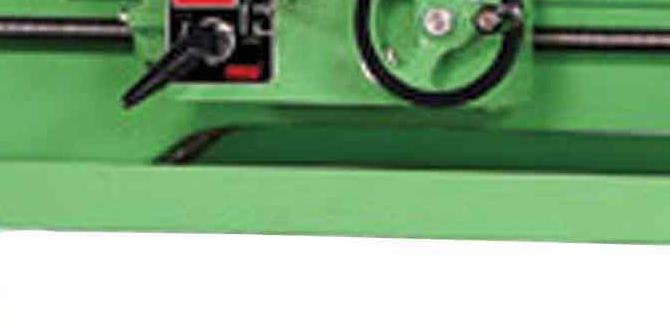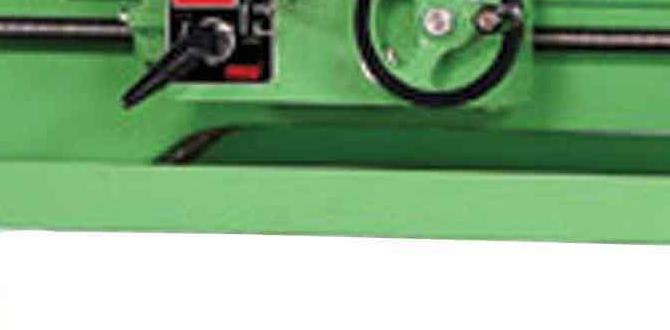Wood Lathe Dust Shield DIY: Effortless Build
Wood lathe dust shield DIY projects are an excellent investment for any woodworker looking to improve their workshop environment and protect their health. Turning wood on a lathe, while incredibly rewarding, inevitably creates a significant amount of fine dust. This dust isn’t just unsightly; it can be a serious respiratory irritant, posing long-term health risks. Fortunately, creating an effective dust shield doesn’t require advanced engineering skills or expensive materials. With a bit of planning and some readily available supplies, you can build a functional and surprisingly simple dust collection solution.
Why a Dust Shield is Essential for Your Wood Lathe
The primary function of a wood lathe dust shield is to capture the airborne wood particles generated during the turning process before they have a chance to disperse throughout your workshop. Without adequate dust control, these fine particles can settle on machinery, contaminate finishes, irritate lungs, and create a generally unpleasant and unhealthy working environment. Think of it as an indispensable piece of safety equipment, much like eye protection or a dust mask, but one that proactively addresses the problem at its source.
Beyond health benefits, a dust shield can also improve the quality of your work. Less dust in the air means a cleaner workspace, making it easier to see your work clearly and apply finishes without them being compromised by stray particles. For those who share their workshop space or for whom their workspace is also a living area, a dust shield also significantly reduces the amount of cleaning required.
Planning Your Wood Lathe Dust Shield DIY Project
The beauty of a wood lathe dust shield DIY project lies in its adaptability. Your design will largely depend on the size of your lathe, the typical size of the projects you turn, and the available space in your workshop. However, a few common design principles apply. The core idea is to create an enclosure around the turning area that forces the dust-laden air towards a collection point.
Consider the following elements during your planning phase:
Enclosure Size and Shape: The shield should be large enough to encompass the entire turning area, including the headstock, tailstock, and cutting tools. A rectangular or octagonal shape is common, with the back open to allow for operation.
Material Choice: Plywood, MDF, or even sturdy corrugated plastic are excellent choices for the main enclosure. They are relatively inexpensive, easy to cut, and durable. For transparent viewing panels, acrylic or polycarbonate sheets are ideal.
Dust Collection Port: This is arguably the most crucial element. You’ll need a dedicated port to connect your dust collector or shop vacuum. The size and placement of this port will influence the effectiveness of your dust extraction. Ideally, it should be positioned to create a consistent airflow pattern that draws dust away from the turning zone.
Access and Mounting: How will you access your workpiece? Hinged doors or removable panels are common solutions. Consider how you will securely mount the shield to your lathe or a nearby workbench. Stability is key to prevent vibrations from compromising the shield’s effectiveness.
* Visibility: While not strictly a dust control element, being able to see your work is paramount. Incorporating transparent viewing windows allows you to monitor your turning progress without compromising the enclosure.
Building Your Effortless Wood Lathe Dust Shield
With your plan in place, it’s time to gather your materials. Basic tools like a saw (circular, jig, or table saw), a drill, screws, glue, and measuring tape will be essential.
Step-by-Step Construction Example (Basic Box Design):
1. Measure and Cut Panels: Based on your design, measure and cut your primary enclosure panels. For a simple box, this would involve cutting four side panels and a top panel. Ensure your cuts are square for a sturdy build.
2. Create Viewing Windows (Optional): If you’re adding windows, carefully cut out the desired openings in the front and/or side panels. Measure and cut your acrylic or polycarbonate panels to fit these openings, allowing a small overlap for attachment.
3. Attach Dust Collection Port: Decide on the location for your dust collection port. This is typically on one of the side panels, near the bottom, where dust tends to accumulate. Cut an appropriate sized hole and attach a fitting that matches your dust collector hose. You can use a pre-made dust collection fitting or adapt a PVC pipe coupler.
4. Assemble the Enclosure: Begin assembling the main panels. Apply wood glue to the edges and then secure them with screws. Work your way around to form the basic box structure.
5. Install Windows (If Applicable): Once the main structure is assembled, attach your acrylic or polycarbonate window panels from the inside using small screws or a strong adhesive like silicone sealant.
6. Add a Door or Access Panel: For most wood lathe dust shield DIY designs, you’ll need a way to access the turning area. This could involve cutting out a section of a panel and attaching it with hinges and a latch, or simply making one of the panels removable and secured with clips or magnets.
7. Mounting Solution: Determine how you will secure the dust shield. Some designs attach directly to the lathe bed, while others are freestanding and supported by a separate frame or bolted to a workbench. Ensure your mounting system is robust and keeps the shield firmly in place during operation.
8. Optional Enhancements: Consider adding features like internal shelves for tools, LED lighting to improve visibility, or a brush seal around the opening to further minimize dust escape.
The Benefits of a DIY Dust Shield for Your Workshop
Investing your time in a wood lathe dust shield DIY project offers significant returns. You gain a healthier working environment, reducing your exposure to wood dust and its associated respiratory problems. Cleaner air also leads to a cleaner workshop, minimizing the need for constant cleanup and protecting your tools and finishes. Furthermore, the satisfaction of building a functional and effective piece of equipment for your own workshop is a reward in itself. With careful planning and a straightforward building process, you can create a dust shield that makes your woodturning experience safer, cleaner, and more enjoyable.



